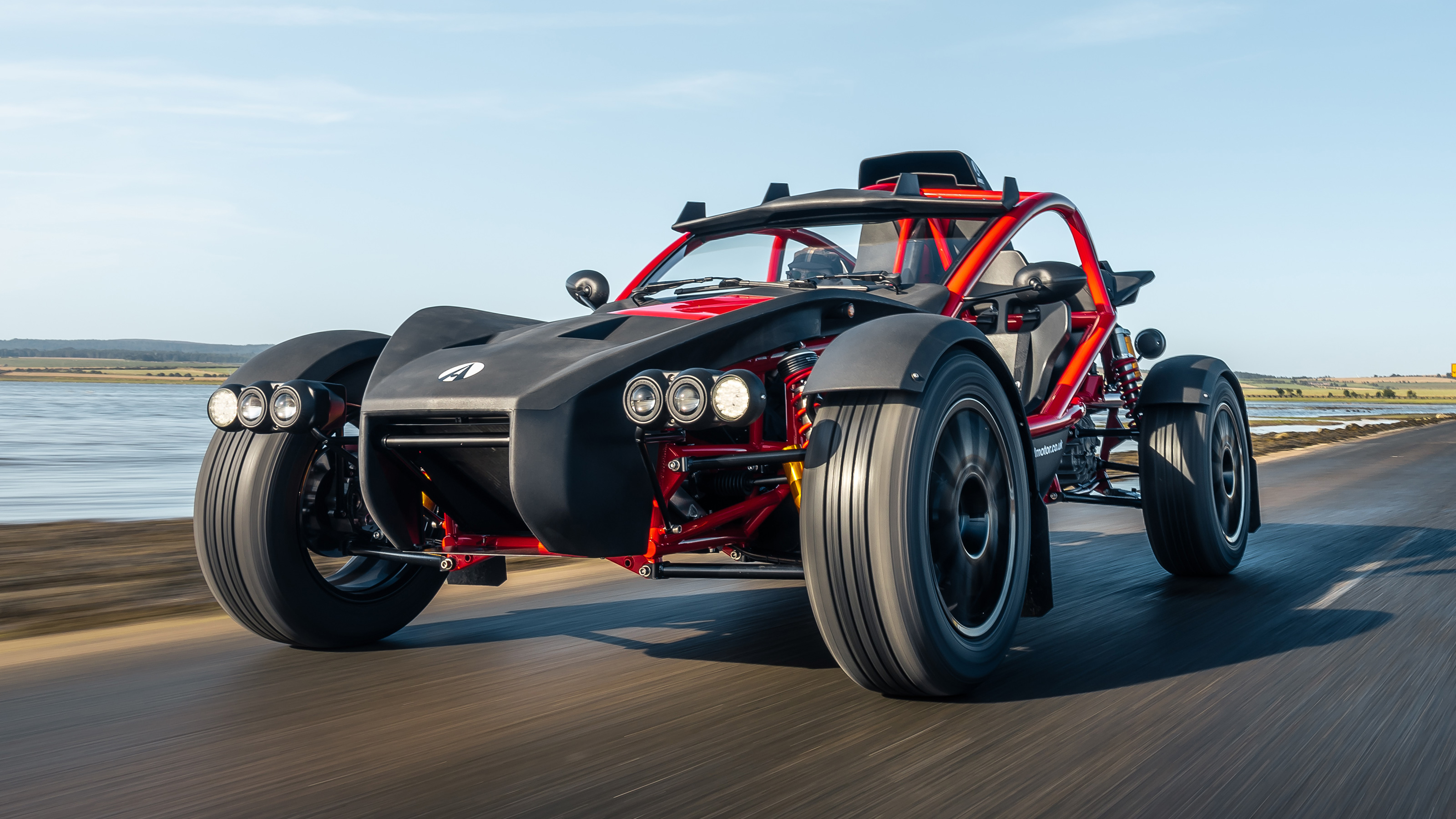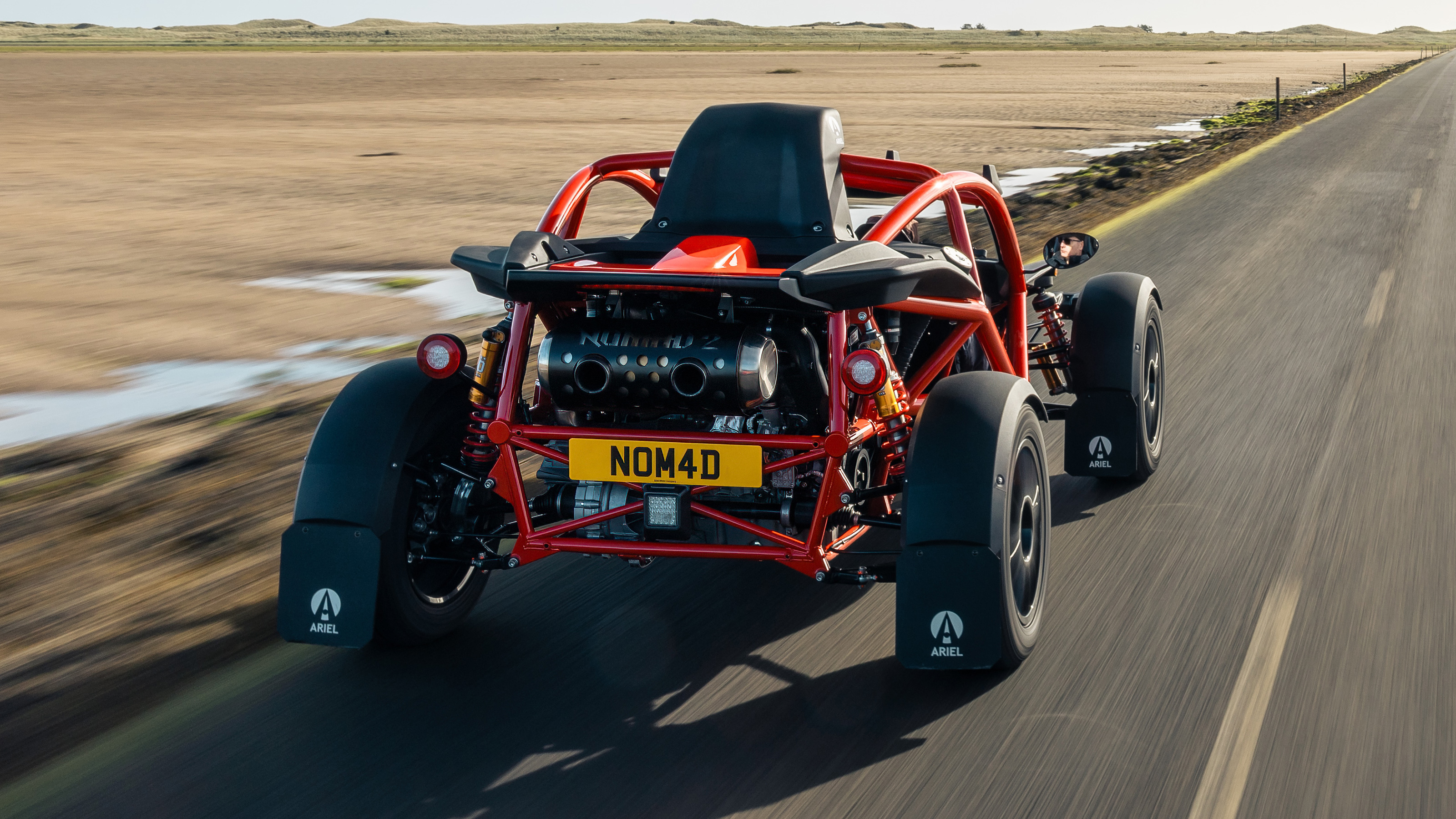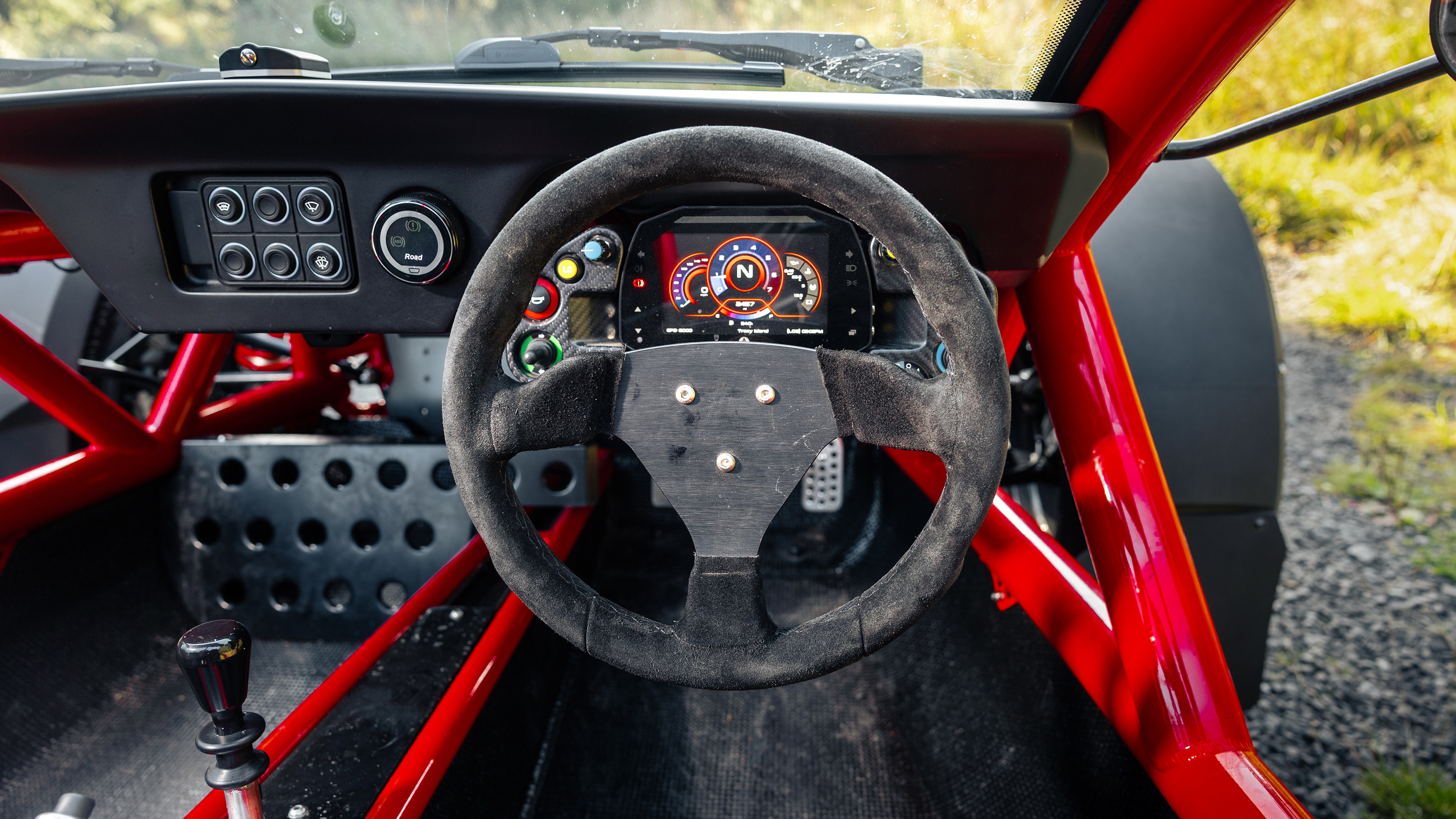
Ariel Nomad 2 review
Driving
What is it like to drive?
To cope with the increased power from the turbo engine, the Nomad 2 has different suspension geometry versus the first Nomad. That makes it much crisper on the road. It does roll of course, but progressively now, and you feel the loading through the wheel because of the unassisted system's purer geometry.
Be smooth into a bend, squeeze on the power after the apex and you can feel the rear sidewalls flexing. Or choose to lift or floor the throttle in a corner and it'll pitch and corkscrew to indicate weight transfer, and eventually go into roll oversteer. Useful on gravel.
So far so 1960s. What is both very modern and very special is the way it uses its huge suspension travel. The primary ride is soft with an extremely low frequency, like a limo, but the Nomad's no floater. It can take a long time to come back down after a crest, but the wheels are always following the surface so no drama. Damping control is remarkable. It feels organic: you’re lovingly cradled as if a babe in arms.
Bumps, potholes and ridges are basically non-issues. They don't upset your direction, and they won't damage the tyres or rims. So you aren't steering around them or staying away from a crumbing road edge. Just pick your line and the Nomad obliges. It's hard to think of a better car for a narrow British B-road than this obedient, unflappable and actually very slim machine.
Is it quick?
Absent any soundproofing, the engine is rattly on start-up. The gearbox and diff whine and squeal at low speed especially on the over-run. Which doesn't mean it's badly engineered – competition cars are just the same – but it's a bit out-there for a car with numberplates.
Even with a few revs up, the engine doesn’t sound very pretty at all. It's evidently a four-cylinder. The answer is to work it harder. The airbox is right by your left ear, and when you open the throttle the induction roar is enough to drown the mechanical hubbub coming from your lumbar region. The turbo wooshes, the exhaust trombones and everything gets more exciting both aurally and physically. Because now this thing is really hauling. Any doubts about the engine are knocked from your mind.
The Nomad is just 715kg in 'on-road' spec. So it'll crack 0-62mph in 3.4 seconds, and in light of everything else going on around you it's a searing rush. As the turbo fully spins up the tail squats and the front end rises like a speedboat going onto the plane.
The gearshift is short and sharp, a wholly mechanical lever action connecting you unambiguously to the cogs behind. The clutch is just as precise. Mostly you'll be in second and third when working the Nomad, because really high speeds on the road aren't what it's for. Unless you're at a track day, just use fourth and fifth when you're cruising, and sixth as a long overdrive.
There are three powertrain maps, activated by a dash switch. The middle one is most road-useful, giving 302bhp and 333lb ft spread wide through the mid ranges. The third map gives an insignificant power lift, to 305bhp, but a sharp spike of torque to 382lb ft. The softest map gives less power, 260bhp, as well as reduced torque, and is presumably more relaxing for wet or mud.
The brake pedal needs a bit of a shove but stopping is reassuringly direct and precise.
Featured

Trending this week
- Car Review
BMW iX3






